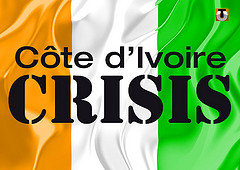Tuesday Tidbits: Measuring the Yellowstone plume, unease at Taal and pyroclastic flows on Etna

First off, a big thank you to James Reynolds who took questions from my Volcanoes class here at Denison today. It was a great chat with the students!
Now, we have news from the volcanic front, some of which I hope to tackle with more depth later:
Yellowstone: All sorts of articles about yet another new study by Zhdanov and others in Geophysical Research Letters (not yet published) about the nature of the plume under the caldera. The long and short seems to be that there might be more hot rocks, melt and heated saline brines (groundwater really) underneath Yellowstone – more or less, it is hotter under the caldera than we thought. This was determined by looking at the electrical conductivity and magnetic (magnetotellurics) of material above the Yellowstone plume to the surface to determine how melted or water-rich the crust might be. Now, before people get concerned that this means an eruption is around the corner, this paper just means that we now know that the crust is warmer, not that the crust has become warmer over human lifespans.
Taal: The rumbling at Taal in the Philippines continue, with 11 new earthquakes under the volcano in the last 24 hours according to PHIVOLCS. The alert status remains at 2 thanks to the high carbon dioxide emissions, inflation and seismicity. One interesting comment about the unrest at Taal came from Batangas Ramon Archbishop Arguelles. He said the threats of the eruption of Taal volcano might even draw more people to observe Holy Week – which I suppose makes sense as disasters and religion tend to go hand-in-hand in many places. However, many people living near the caldera are being told to be ready to evacuate if the situation deteriorates.

Small pyroclastic flows generated by the interaction of snow and ice on Etna on April 10, 2011. Image courtesy of Dr. Boris Behncke.
Etna: Activity at Etna has calmed down since the small eruption over the weekend. However, we do have some nice, new images and description of the activity (or at least the aftermath) provided by Dr. Boris Behncke. Boris also posted some images of the small pyroclastic flows that were generated by snow-lava interaction during the weekend’s activity – a bit of a rarity of Etna. I’ve never seen or heard much about pyroclastic flows generated by snow-lava interaction (see above), but it makes sense. The snow will melt and cause explosions as the water then flashes to steam. This would generate a cloud of hot gases and fragmental volcanic material, which could then move downslope gravitationally. Check out this article for more details on the phenomenon.
Top left: Etna erupting on April 10, 2011. Image courtesy of Dr. Boris Behncke – click here to see the original





